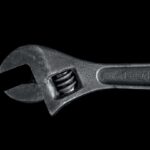I have been creating financial projections since before Keurig existed. My standard long term projection model has evolved over that span of time . . . and it continues to do so. It is not the boilerplate, plug-and-play spreadsheet that many clients assume. Without exception, I must customize its revenue section, matching it to one (and usually to more than one) business model. Like snowflakes, no two are the same.
Each business model has its particular metrics. Investors favor certain ones, discounting others. That’s one reason why Gust, AngelList, and similar sites ask entrepreneurs to succinctly describe their business models. Among the generic choices are these:
- Classic Retailer
A retailer may be a bricks and mortar store or an ecommerce site. It is the last link of a long supply-chain involving manufacturers, distributors and others. Retailers sell products directly to consumers. - Affiliate
Affiliate business models involve contracting with a company or a network to sell their products or services. One gets paid when someone buys something or executes the desired action (registering, clicking . . .). - Subscription
An SaaS or a similar software access fee, structured to require ongoing payments for continued access. The incentive is to entice clients into long term subscription relationships. - Freemium
Freemium business models involve offering free or limited scope products in the hopes of convincing users to switch to paid versions with costlier, premium features. - Manufacturer
As the name suggests, a manufacturer is a company that produces finished goods from raw materials by using tools, equipment, laborers, and other processes. It may produce its own goods or act as a contract manufacturer for others. - Keurig or Razor Blade
Needless to say, this is my favorite. This business model involves selling a durable appliance or device at a relatively low markup in order to generate an ongoing stream of high margin, consumable product sales. K-cups and toner cartridges are classic examples. - Fee for Service
These models focus on providing services and charging for labor (and any ancillary parts provided). Often this involves licensed or otherwise specialized trades. Hourly and/or fixed fee services are the norm. - Other:
There are many other business models to consider, including: Advertising/Marketplace, Franchise, Brokerage, Pay-As-You-Go, Reverse Razor Blade, Affiliate, Bunding, Lifestyle, Gambling, and so on.
Generic models are fine but it is a rare company that does not have a hybrid business model, one that incorporates two or more of the above approaches. For instance, I frequently encounter products that have Bluetooth capabilities and linked apps. Subscription revenues complement the (primary) retail sales. Properly capturing these and other revenue model complexities is critical to creating an effective financial projection. Off-the-shelf programs seldom offer such flexibility.
So, if you’re struggling with your projection model and how to properly project revenues, consider contacting Worldwide Local Connect. We’ve been helping clients craft/document successful business models for years. We can help you, too. Drop us a line.









